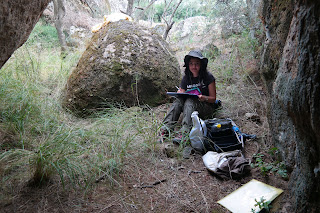Engineer Amongst The Ruins by Mert GÜNEŞ

The one thing I got most often from the people I met in Labraunda was “Ah, so you’re the engineer.” While it certainly was unusual for me to be there given my background, I was lucky enough to fulfill my childhood dream of taking part in an excavation. My stay in Labraunda was quite an experience. The site itself is marvellous, anywhere you look you can see parts of history, any rock you step on has probably been in use for thousands of years. It has a fine balance with nature where you’re surrounded by forestation but it’s not the middle of nowhere, and you may encounter the occasional lizard or most likely a spider. I even saw a porcupine once. The sunrise and sunset are quite beautiful and the night sky is visibly clear with no shortage of stars after about nine pm, which is refreshing after the rather blank night skies of bigger cities. The mountain air and the freshness of the water has something about it that gives you strength no matter how tired you get, even for someone such ...





